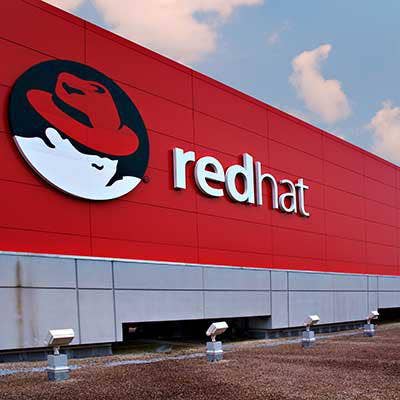Red Hat Relying On Its Channel To Attack The Midmarket

Red Hat technology has long been ubiquitous inside large enterprises. But the open source leader is rapidly extending its reach down-market, where the opportunity is ripe for partners.
The Raleigh, N.C.-based software developer is leveraging a portfolio that's expanded well beyond its flagship Linux distribution to win smaller customers and drive new channel alliances, Steve Mungall, vice president for global alliances and partners, told CRN.
At last week's Red Hat North America Partner Conference, Red Hat leaders emphasized to the company's channel that the midmarket—the fastest growing segment of Red Hat's business—was entirely theirs to win for the company.
[Related: Red Hat CEO Jim Whitehurst On How He Plans To Win The Container Market]
Red Hat does more than 70 percent of its business through the channel. But just about all the emerging opportunities with smaller customers are generated by partners, Mungall said.
Red Hat over the last year has become less "enterprise-centric," Mungall told CRN, thanks to a diversifying portfolio that enables infrastructure automation and management across hybrid environments.
Many of its new partners have signed with Red Hat specifically to deliver technologies like configuration management, service automation, and hybrid cloud, Mungall said.
In that space, Red Hat's two fastest-growing products—Ansible and OpenShift—are standing out.
Ansible, the popular configuration manager Red Hat acquired in 2015, in particular is opening new markets, and driving new channel alliances to serve them.
Partners are using Ansible to dive deeper into software automation, as well as network, security and services automation, Mungall said.
OpenShift, Red Hat's container management platform, is still primarily a solution for large enterprises. But the latest release of that Kubernetes-based technology incorporates features that make it more viable for smaller companies with less IT resources.
OpenShift 3.11, introduced last week, added functionality like graphical interface tools to simplify management of Kubernetes environments, integrated monitoring and greater dashboard visibility. It’s the first version of OpenShift to incorporate CoreOS technology.
CoreOS, another major Red Hat acquisition, built a Kubernetes platform focused on Day 2 Operations, prioritizing ease-of-use with automated operations and over-the-air updates.
Across Linux, OpenShift and Ansible, Red Hat sees a $58 billion addressable market, Mungall told CRN.
The diverse portfolio is fueling growth in Red Hat's Apex partner program that helps partners accelerate practices around application development and delivery, integration services, and business process automation.
At last year's partner conference, Apex applied exclusively to partners implementing Red Hat's JBoss middleware. Now the program has been expanded across the portfolio, bringing Ansible and OpenShift partners into the fold, Mungall said.
As a result, more than 30 partners were added to Apex since June of 2017—half of them entirely new to Red Hat.
"The contribution from our partners will become a larger and larger percentage of what the company does," Mungall said. "When we were enterprise-centric, we didn’t' have the midmarket as a partner lever."
Joe Dickman, senior vice president of Vizuri, a Red Hat consultancy based in Virginia just named Red Hat's "North America Commercial Leading Edge Partner of the Year" at the recent partner conference, said Ansible has changed the way solution providers think about automation.
At AnsibleFest 2018 in Austin, Texas, Red Hat introduced a certification program for the configuration manager—and Cisco, CyberArk, F5 Networks, Infoblox, NetApp and Nokia all debuted Ansible-certified offerings.
When companies of their stature certify products around a technology, they "drag their own partner communities with them," Dickman told CRN. Vizuri is seeing Ansible attract a new set of partners who had not previously worked with Red Hat.
"These new partners are also creating opportunities for other Red Hat partners where a customer who now uses Ansible is more open to exploring other Red Hat solutions," Dickman said.
Ansible, supported by modules certified by those third-party vendors, is providing net-new opportunities for Red Hat partners to expand the capabilities they deliver to their existing client bases, empowering them to add value and gain share of IT spend, Dickman said.
"Automation opens up the discussion and enables us to expand and extol the open source story," he told CRN.
With OpenShift, no one feature will be a tipping point to midmarket penetration, Dickman said.
But Red Hat has made large strides in "bringing usability to the forefront," he said, recognizing that customer education is key to attracting new organizations, especially in the midmarket.
As demand for OpenShift grows, Dickman said, so does the need for "simplifying the installation and configuration" to allow organizations to focus on the value and benefits of the platform rather than figuring out how to "turn the wrenches."